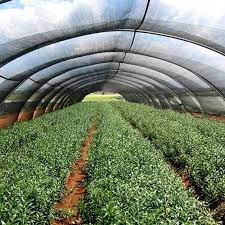
Shade Nets In Kenya
As the top among all shade net suppliers in Kenya, Grekkon Limited’s shade nets in Kenya are of different types and color. We have all types of shade nets for agriculture, for the production of both food, and none food crops. The cost price of a shade net roll is from Kes 12,500. Below, we answer commonly asked questions
1. What are shade nets?
They are HDPE, UV treated woven or knitted netting material that regulate the amount of light and heat from the sun, air and moisture. Shade nets reduce the temperature delta (difference between day and night temperatures), thereby avoiding a sudden temperature variation, so that plants don’t suffer from thermal shock A good degree of beneficial moisture is trapped between the ground and the net. They are water permeable so that rain water, and irrigation water will reach the crop and keep it hydrated
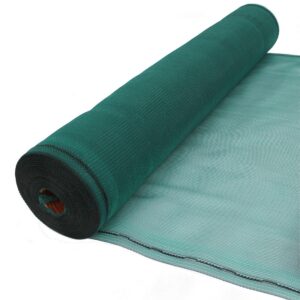
A knitted green shade net roll
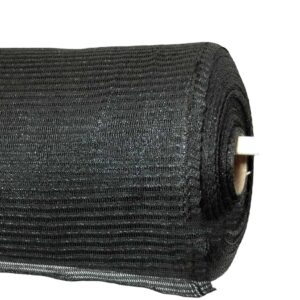
A knitted black shade net roll
2. What are shade nets used for?
- In the nursery to protect seedlings from direct radiation, and harden seedlings
- In orchards and farms to protect crops from intense sunlight as well as bird and insect pests
- Shade net fencing. On a fence to block excessive wind on the crop, and to reduce the farm’s view from outside
- To cover water reservoirs or water tanks so as to reduce water loss by evaporation
- In livestock production to protect them against extreme heat
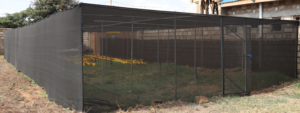
3. How much do shade nets cost in Kenya?
Tabulated below are our shade net prices in Kenya are per meters squared, by type
| % Shade | Cost per M Sq In Kes |
| 30% | 70 |
| 55% | 75 |
| 75% | 100 |
| 90% | 170 |
Grekkon Limited’s shade nets are available as 50M x 4M rolls in all our branches country wide
4. What is the cost of shade net per acre?
Our shade nets for sale in Kenya by per acre are measured as 4,100M sq
| % Shade | Cost per Acre In Kes |
| 30% | 295,200 |
| 55% | 352,600 |
| 75% | 410,000 |
| 90% | 697,000 |
5. What are the types of shade nets?
By material
- Woven shade nets. They are made from polypropylene, are heavier and allow heat build up. They withstand the most extreme exposure to the sun, and have minimum shrinkage. Woven shade nets are for shading of plants, pet kennels, windscreens, patios and for privacy. Woven shade nets are 30% heavier than knitted shade nets, and are difficult to install
- Knitted shade nets. They are made up lightweight polyethylene. They have an open lock-stitch design that resists wind damage, and reduces heat build up in the net. The level of shrinkage is 2% to 3%. Knitted shade nets have better longevity in agricultural use as they resist agro-chemicals and detergents. They are preferred for shade houses, and greenhouses.
Grekkon Limited’s shade nets are all knitted with monofilament fabric which is durable due to he thicker thread. A thicker thread has a longer process of photo oxidation as compared to a thinner thread, hence the longer lifespan

By % shade
- 90% shade nets are appropriate for crop nurseries located in low altitude or extremely hot locations
- 75% shade nets are preferred for nurseries in high to mid altitude locations that are also hot. They are also used in the hardening stage of seedlings in hot low altitudes. This will grow ferns, orchids and succulents
- 55% shade nets are for hardening of nursery crops, or for growing plants in very hot locations for crops that are sensitive to intense sunlight. Good for growing cabbage, geraniums, lettuce, foliage plants, cuttings, orchids and most potted plants
- 30% shade nets are for growing crops that need just a little bit of shading, yet lots of light for photosynthesis. Great for growing heat tolerant plants like tomato, pepper, roses, strawberry, cucumber and squash

By color
- Black
- Green
The color choice does not affect the performance for these two. Both allow all light wavelengths go through. However, brightly colored shade nets like white and aluminum reflect the sun’s heat creating a cooling effect
6. How do shade nets work?
They absorb or reflect the sun’s heat. They act as filters by depriving the plants of excess sunlight
Shade Nets In Kenya
How To Select The Right Shade Net
- Crop type. Some crops require more shade than others
- Stage of growth. Seedlings will be more shaded than mature crops
- Farming method. A shade net on a greenhouse will be lighter than that in the open field for the same crop
- Season. Denser nets will go with hotter seasons
- Location. Hot low altitude locations will have denser nets than higher altitude cooler places
- Usage. The wind break net, the water reservoir cover net, the greenhouse cover net, and the open field net will differ
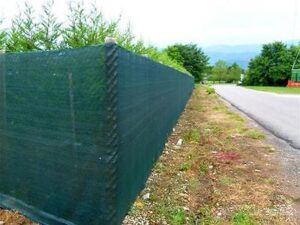
A green shade net installed as a wind break
Our shade nets are green or black in color. The color has no bearing on the net effectiveness, but is rather for aesthetic reasons. Shade nets are supported by steel, or wooden frames for shade houses
